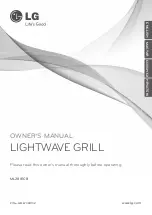
13
ADJUSTMENTS
The front Clamp Plate (#43) will rotate slightly to
give pressure on irregular shaped pieces, and the
Clamping Base (#37) can be angled to conform
to tapered work pieces. The two Bolts (#32) can
be loosened and tightened to secure the fence in
position for maximum holding power. FIG. 15.
FIG. 15
FIG. 16
FIG. 17
Continued from page 12
Adjusting the Depth Stop
Drilling depths of the mortiser can be set with the
adjustments on the right side of the column.
To set a specific depth for mortising with the
chisel and bit;
1.
Mark your mortise depth on the side of your
work piece, or scrap material, for reference.
Position the chisel and bit that you will be using
against this mark. FIG. 16. To keep the mortising
head in this location, the locking head Screw (#64
- see page 9) can be tightened.
NOTE:
The depth of the mortise should be set to
the chisel point, not to the tip of the drill bit. The
extra depth cut by the drill bit will allow room for
any excess glue.
2. Position the depth stop Plate (#81, FIG, 17, A)
along the Guide Column Rod (#10) until the hex
head Bolt (#79) hits the Depth Stop Plate (#12),
B, that is mounted on the mortiser’s head.
3. Lock the stop plate in position with the Handle
Screw (#8) C. The depth stop is set for your
drilling. If further fine tuning is needed, the Bolt
(#79) can be adjusted and locked in position with
the hex Nut (#80).
4. Unlock the head Screw (tightened in step 1)
so that the mortising head is released.
THE MACHINE MUST NOT BE
PLUGGED IN AND THE POWER SWITCH MUST BE IN THE
OFF POSITION UNTIL ALL ADJUSTMENTS ARE COMPLETE.
A
B
C
Summary of Contents for 34-260
Page 19: ...19 WARRANTY ...






































